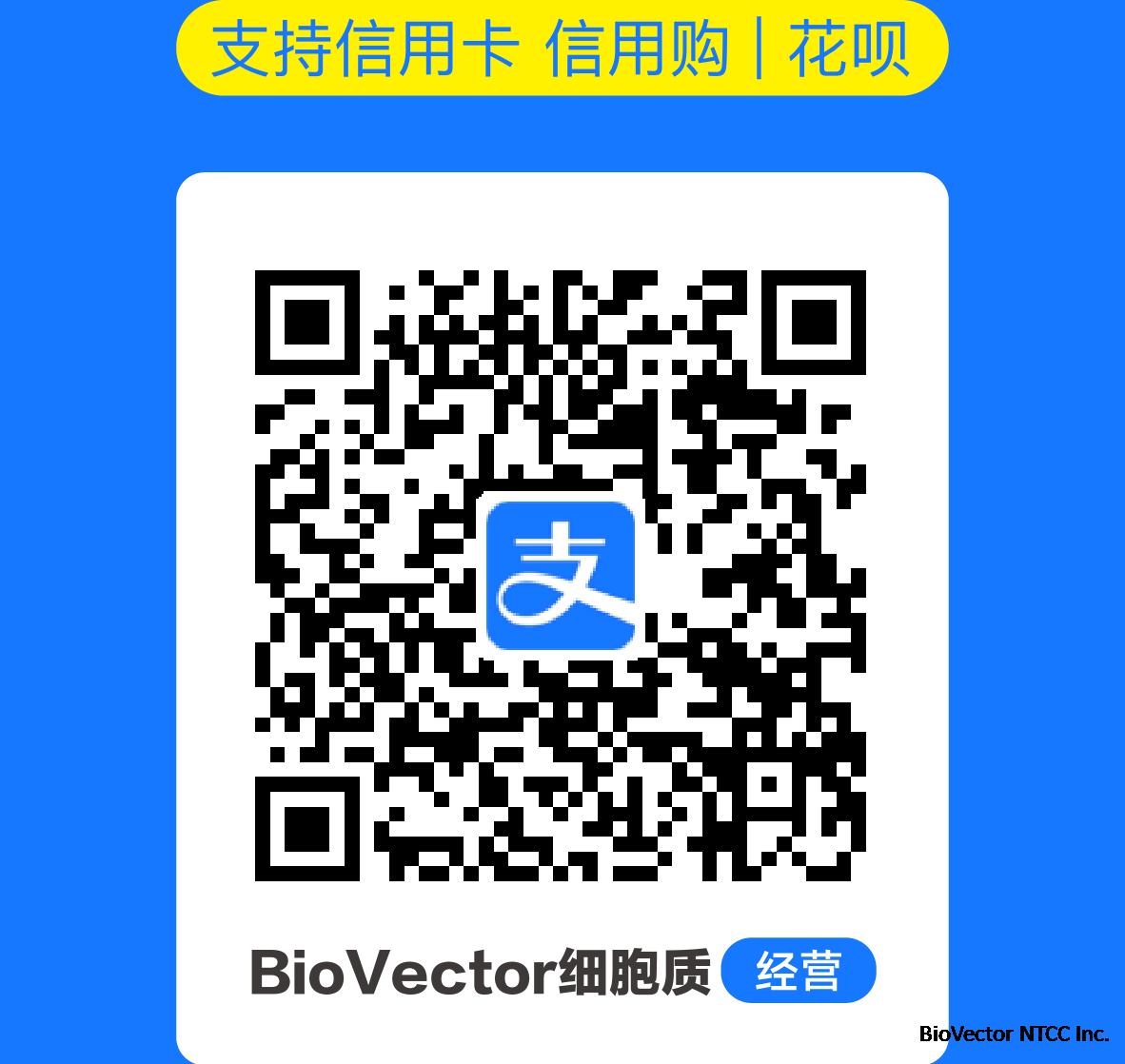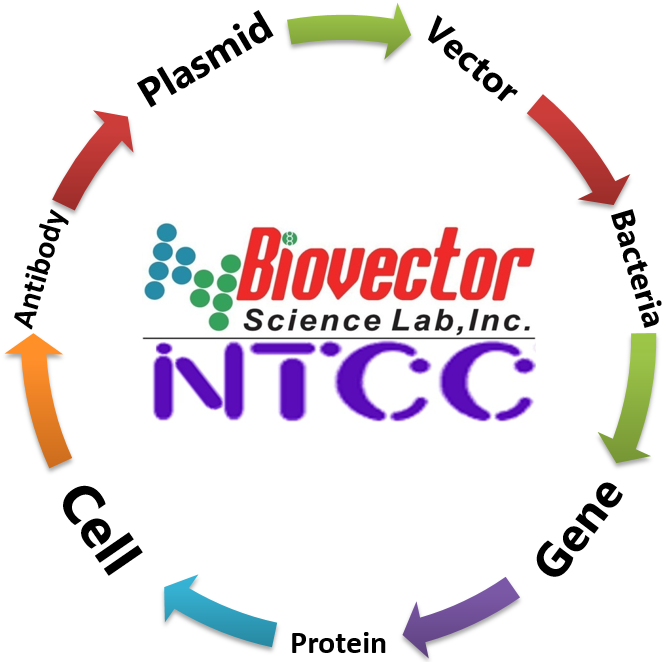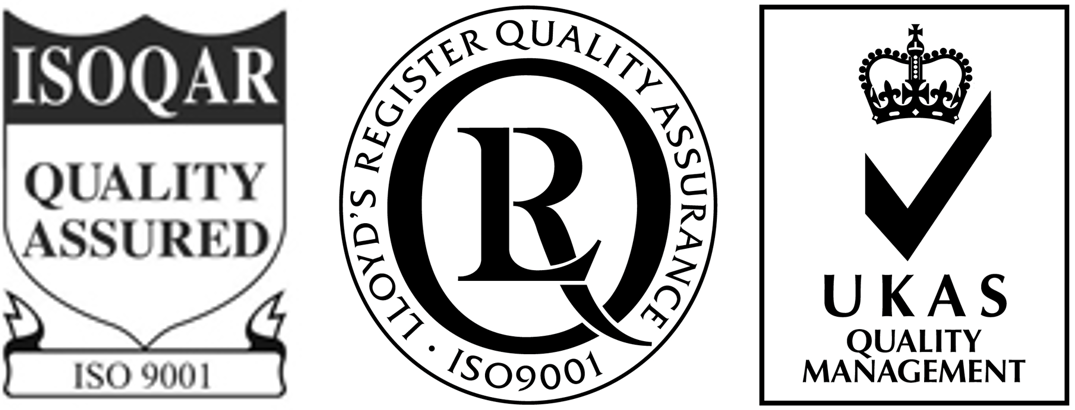BA/F3_EML4-ALK V1激酶Kinase穩定表達細胞株-BioVector NTCC保藏中心
- 價 格:¥0
- 貨 號:BA/F3_EML4-ALK V1
- 產 地:北京
- BioVector NTCC典型培養物保藏中心
- 聯系人:Dr.Xu, Biovector NTCC Inc.
電話:400-800-2947 工作QQ:1843439339 (微信同號)
郵件:Biovector@163.com
手機:18901268599
地址:北京
- 已注冊
BA/F3_EML4-ALK V1激酶Kinase穩定表達細胞株-BioVector NTCC保藏中心
I. Introduction
Cell Line Name:
Ba/F3_EML4-ALK v1
Gene Synonyms:
Echinoderm Microtubule Associated Protein Like 4, EML4, EMAPL4; ALK, ALK Receptor Tyrosine Kinase, CD246 Antigen
Host Cell:
Ba/F3
Stability: 16 passages
Application:
Anti-proliferation assay and PD assay
Freeze Medium:
90% FBS+10% DMSO
Complete Culture Medium:
RPMI-1640+10% FBS+1 ug/ml puromycin
Mycoplasma Status:
Negative
II.Background
Approximately 3–7% of lung tumors harbor ALK fusions (Koivunen et al. 2008; Kwak et al. 2010; Shinmura et al. 2008; Soda et al. 2007; Takeuchi et al. 2008; Wong et al. 2009). ALK fusions are more commonly found in light smokers (< 10 pack years) and/or never-smokers (Inamura et al. 2009; Koivunen et al. 2008; Kwak et al. 2010; Soda et al. 2007; Wong et al. 2009). ALK fusions are also associated with younger age (Inamura et al. 2009; Kwak et al. 2010; Wong et al. 2009) and adenocarcinomas with acinar histology (Inamura et al. 2009; Wong et al. 2009) or signet-ring cells (Kwak et al. 2010). Clinically, the presence of EML4-ALK fusions is associated with EGFR tyrosine kinase inhibitor (TKI) resistance (Shaw et al. 2009).
Multiple different ALK rearrangements have been described in NSCLC. The majority of these ALK fusion variants are comprised of portions of the echinoderm microtubule-associated protein-like 4 (EML4) gene with the ALK gene. At least nine different EML4-ALK fusion variants have been identified in NSCLC (Figure 1; Choi et al. 2008; Horn and Pao 2009; Koivunen et al. 2008; Soda et al. 2007; Takeuchi et al. 2008; Takeuchi et al. 2009; Wong et al. 2009). In addition, non-EML4 fusion partners have also been identified, including KIF5B-ALK (Takeuchi et al. 2009) and TFG-ALK (Rikova et al. 2007). Clinically, the presence of an ALK rearrangement is detected by fluorescence in situ hybridization (FISH) with an ALK break apart probe. FISH testing is not able to discern which particular ALK fusion is found in a clinical sample.
III. Representative Data
1. WB of Ba/F3_EML4-ALK v1 expression
Figure 1. WB of ALK expression
Lane 1: Ba/F3
Lane 2: Ba/F3_EML4-ALK v1
Lane 3: Ba/F3_EML4-ALK v1 L1196M
2. Anti-proliferation assay
Figure 2. Anti-proliferation assay of three reference compounds on the Ba/F3_EML4-ALK v1 Stable Cell Line
IV. Thawing
Thawing: Protocol
1. Remove the vial from liquid nitrogen tank and thaw cells quickly in a 37°C water-bath.
2. Just before the cells are completely thawed, decontaminate the outside of the vial with 70% ethanol and transfer the cells to a 15 ml centrifuge tube containing 9 ml of complete growth medium.
3. Pellet cells by centrifugation at 200 x g force for 5 min, and discard the medium.
4. Resuspend the cells in complete growth medium.
5. Add 10 ml of the cell suspension in a 10 cm dish.
6. Add promycin to a concentration of 1 μg/ml the following day.
Kinase細胞株
現代新藥研發的關鍵首先是尋找,確定和制備藥物作用靶點。在500多個已發現的藥物靶點里中,GPCR,Ion Channel,Kinase使用的最為廣泛。
激酶(kinase)是一類從高能供體分子(如ATP)轉移磷酸基團到特定靶分子(底物)的酶;這一過程謂之磷酸化。許多腫瘤的發生是由某些與生長相關的“激酶”發生突變導致異常活化引起的,因而針對這些突變激酶的抑制劑能夠有效抑制這些激酶的活性,從而達到抑制癌細胞增長的目的。
BioVector NTCC質粒載體菌種細胞蛋白抗體基因保藏中心
電話:+86-010-53513060
網址:www.biovector.net
I. Introduction
Cell Line Name:
Ba/F3_EML4-ALK v1
Gene Synonyms:
Echinoderm Microtubule Associated Protein Like 4, EML4, EMAPL4; ALK, ALK Receptor Tyrosine Kinase, CD246 Antigen
Host Cell:
Ba/F3
Stability: 16 passages
Application:
Anti-proliferation assay and PD assay
Freeze Medium:
90% FBS+10% DMSO
Complete Culture Medium:
RPMI-1640+10% FBS+1 ug/ml puromycin
Mycoplasma Status:
Negative
II.Background
Approximately 3–7% of lung tumors harbor ALK fusions (Koivunen et al. 2008; Kwak et al. 2010; Shinmura et al. 2008; Soda et al. 2007; Takeuchi et al. 2008; Wong et al. 2009). ALK fusions are more commonly found in light smokers (< 10 pack years) and/or never-smokers (Inamura et al. 2009; Koivunen et al. 2008; Kwak et al. 2010; Soda et al. 2007; Wong et al. 2009). ALK fusions are also associated with younger age (Inamura et al. 2009; Kwak et al. 2010; Wong et al. 2009) and adenocarcinomas with acinar histology (Inamura et al. 2009; Wong et al. 2009) or signet-ring cells (Kwak et al. 2010). Clinically, the presence of EML4-ALK fusions is associated with EGFR tyrosine kinase inhibitor (TKI) resistance (Shaw et al. 2009).
Multiple different ALK rearrangements have been described in NSCLC. The majority of these ALK fusion variants are comprised of portions of the echinoderm microtubule-associated protein-like 4 (EML4) gene with the ALK gene. At least nine different EML4-ALK fusion variants have been identified in NSCLC (Figure 1; Choi et al. 2008; Horn and Pao 2009; Koivunen et al. 2008; Soda et al. 2007; Takeuchi et al. 2008; Takeuchi et al. 2009; Wong et al. 2009). In addition, non-EML4 fusion partners have also been identified, including KIF5B-ALK (Takeuchi et al. 2009) and TFG-ALK (Rikova et al. 2007). Clinically, the presence of an ALK rearrangement is detected by fluorescence in situ hybridization (FISH) with an ALK break apart probe. FISH testing is not able to discern which particular ALK fusion is found in a clinical sample.
III. Representative Data
1. WB of Ba/F3_EML4-ALK v1 expression
Figure 1. WB of ALK expression
Lane 1: Ba/F3
Lane 2: Ba/F3_EML4-ALK v1
Lane 3: Ba/F3_EML4-ALK v1 L1196M
2. Anti-proliferation assay
Figure 2. Anti-proliferation assay of three reference compounds on the Ba/F3_EML4-ALK v1 Stable Cell Line
IV. Thawing
Thawing: Protocol
1. Remove the vial from liquid nitrogen tank and thaw cells quickly in a 37°C water-bath.
2. Just before the cells are completely thawed, decontaminate the outside of the vial with 70% ethanol and transfer the cells to a 15 ml centrifuge tube containing 9 ml of complete growth medium.
3. Pellet cells by centrifugation at 200 x g force for 5 min, and discard the medium.
4. Resuspend the cells in complete growth medium.
5. Add 10 ml of the cell suspension in a 10 cm dish.
6. Add promycin to a concentration of 1 μg/ml the following day.
Kinase細胞株
現代新藥研發的關鍵首先是尋找,確定和制備藥物作用靶點。在500多個已發現的藥物靶點里中,GPCR,Ion Channel,Kinase使用的最為廣泛。
激酶(kinase)是一類從高能供體分子(如ATP)轉移磷酸基團到特定靶分子(底物)的酶;這一過程謂之磷酸化。許多腫瘤的發生是由某些與生長相關的“激酶”發生突變導致異常活化引起的,因而針對這些突變激酶的抑制劑能夠有效抑制這些激酶的活性,從而達到抑制癌細胞增長的目的。
BioVector NTCC質粒載體菌種細胞蛋白抗體基因保藏中心
電話:+86-010-53513060
網址:www.biovector.net
您正在向 biovector.net 發送關于產品 BA/F3_EML4-ALK V1激酶Kinase穩定表達細胞株-BioVector NTCC保藏中心 的詢問
- 公告/新聞




